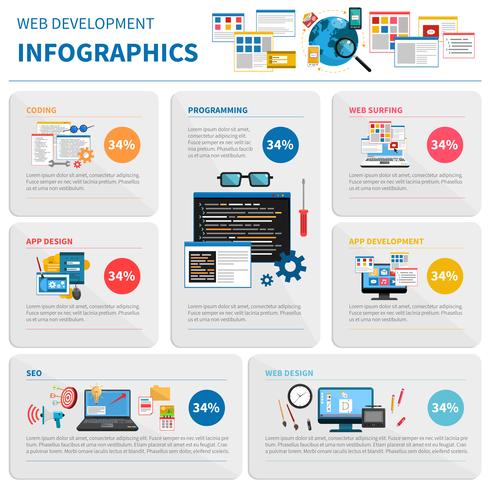Website Layout: A Journey With Time.From Humble Beginnings To Modern Marvels, Web Site Design Has Actually Undertaken A Significant Change Throughout The Years
Website Layout: A Journey With Time.From Humble Beginnings To Modern Marvels, Web Site Design Has Actually Undertaken A Significant Change Throughout The Years
Blog Article
Produced By-Solis Dodson
In the past, internet sites were straightforward and focused on details. Navigating was direct, and design was for desktops. Now, individual experience is vital. Data overviews designs for very easy navigating. Receptive formats match various tools. Today, dark setting lowers pressure, and minimalist menus enhance navigating. Interactive attributes involve users, and bold visuals stand apart. AI integration enhances involvement. See exactly how https://cruzwqkey.blogofchange.com/30384383/optimize-your-site-s-possibility-with-on-page-seo-secrets-that-change-your-online-existence-and-astound-target-markets has advanced to improve your on the internet journey.
Very Early Days of Website Design
In the very early days of web design, simplicity preponderated. Web sites were fundamental, with restricted colors, font styles, and designs. The emphasis was on supplying information rather than fancy visuals. Individuals accessed the web with sluggish dial-up connections, so rate and performance were key.
Navigating food selections were straightforward, usually situated at the top or side of the web page. Websites were designed for home computer, as mobile browsing had not been yet widespread. Material was king, and designers prioritized simple readability over complicated style components.
HTML was the primary coding language utilized, and developers had to work within its restrictions. Animations and interactive attributes were minimal contrasted to today's requirements. Sites were static, with little vibrant content or personalized user experiences.
Rise of User-Focused Design
With the development of site design, a shift in the direction of user-focused style concepts has become increasingly noticeable. Today, producing sites that focus on individual experience is critical for engaging visitors and attaining organization objectives. User-focused style involves understanding the requirements, preferences, and behaviors of your target audience to customize the web site's format, material, and features as necessary.
Developers now conduct complete research study, such as individual surveys and usability screening, to gather insights and responses straight from individuals. This data-driven method helps in developing intuitive navigating, clear calls-to-action, and visually appealing interfaces that resonate with visitors. By putting the user at the center of the design procedure, sites can provide a much more personalized and satisfying experience.
Receptive design has also emerged as a vital element of user-focused layout, ensuring that web sites are optimized for numerous devices and screen dimensions. This adaptability enhances availability and functionality, satisfying the diverse methods customers interact with internet sites today. In essence, the surge of user-focused design indicates a change in the direction of developing electronic experiences that focus on the requirements and assumptions of completion customer.
Modern Trends in Web Design
Explore the latest trends shaping website design today. One popular fad is dark mode design, offering a streamlined and modern appearance while decreasing eye pressure in low-light atmospheres. An additional crucial trend is minimalist navigation, streamlining food selections and enhancing customer experience by focusing on essential elements. Incorporating Recommended Internet site -interactions, such as animated switches or scrolling results, can develop a much more engaging and interactive web site. Responsive layout remains vital, making sure seamless customer experiences throughout different gadgets. Furthermore, making use of vibrant typography and asymmetrical layouts can include aesthetic rate of interest and draw attention to specific material.
Integrating AI modern technology, like chatbots for customer support or personalized recommendations, improves customer engagement and streamlines processes. Ease of access has also become a substantial fad, with designers prioritizing comprehensive style techniques to accommodate diverse user needs. Embracing sustainability by maximizing website performance for rate and efficiency is another emerging trend in web design. Teaming up with customer feedback and data analytics to iterate and boost style continuously is important for remaining appropriate in the ever-evolving digital landscape. By accepting these modern-day fads, you can create an aesthetically enticing, straightforward web site that resonates with your target market.
Final thought
As you review the development of website layout from the early days to now, you can see how user-focused layout has come to be the driving pressure behind modern-day fads.
Welcome the journey of adjustment and adjustment in web design, always maintaining the user experience at the forefront.
Keep existing with the current trends and technologies, and never stop developing your technique to create visually sensational and straightforward websites.
Develop, adapt, and create - the future of web design is in your hands.
